评语:Phone (3) 是一款旗舰产品,仅在 "Nothing"(无)中才会出现。
通过 Phone (3),Nothing 始终坚持自己的理念,即开发与竞争对手略有不同的智能手机。这体现在透明的背面、不对称的摄像头排列、轻薄快速的 Nothing OS 3.5 以及带有 486 个 LED 的 Glyph Matrix 等附加功能上。
Nothing Phone (3) 拥有五年的操作系统更新和直至 2032 年的软件支持,这为用户提供了更多考虑的理由。其他优点还包括明亮的 AMOLED 屏幕、良好的照相系统和大容量快速充电电池,可以满足一整天的高强度使用。
尽管如此,Nothing Phone (3) 也有一些小缺点。Snapdragon 8s Gen 4 速度很快,但与基本款 799 欧元的售价并不匹配。
此外,它采用的不是 LTPO AMOLED 显示屏,而是 LPTS 显示屏。在显示屏玻璃方面也没有任何改进。许多同价位的智能手机都采用了大猩猩 Victus 玻璃,而 Nothing Phone (3) 却只采用了耐磨性较差的大猩猩 7i 玻璃。
Pros
Cons
价格和供应情况
Table of Contents
- 评语:Phone (3) 是一款旗舰产品,仅在 "Nothing"(无)中才会出现。
- 规格
- 构建Glyph Matrix 取代 Glyph 界面
- 功能最高 16GB 内存和 512GB 存储空间
- 软件:Android 更新至 2032 年,以及用于 Glyph Matrix 的 SDK
- 通信和全球导航卫星系统:快速 Wi-Fi 7 和精确导航
- 电话功能和语音质量
- 摄像头:5000 万像素,一包四台
- 附件和保修:不含电源适配器
- 输入设备和操作:无响应手机
- 显示屏120 Hz LTPS AMOLED,90 Hz PWM
- 性能:搭载骁龙 8s 第 4 代处理器的 Nothing Phone (3)
- 游戏:保证游戏流畅
- 排放:无热智能手机
- 能源:配备硅碳电池的无手机 (3)
- Notebookcheck 对 Nothing Phone 的总体印象 (3)
- 潜在替代品比较
该公司声称,Nothing Phone (3) 是一款真正的旗舰智能手机。可以肯定的是,它在性能、电池容量和软件支持方面超越了以往所有的 Nothing Phone 手机。
不过,我们的评测也显示,Nothing 在某些方面缩减了足够的硬件成分,因此对用户来说并没有明显的劣势。
因此,Nothing Phone(3)给人的感觉就像一款高端智能手机,但实际上却不是。
规格
构建Glyph Matrix 取代 Glyph 界面
Nothing Phone (3) 的显示屏边框薄至 1.86 毫米,有黑色和白色两种颜色可供选择,给人留下了高品质的视觉印象。在做工方面也没有什么可抱怨的。不过,手机在扭动时确实会发出细微的噼啪声。
与前代产品相比,最大的创新在于透明的背面。标志性的 Nothing 设计依然存在,但 Glyph 界面已被 Glyph Matrix 取代--这是一个由 489 个 LED 组成的小型单色显示屏。
Glyph Matrix 位于右上角,可显示电池电量或接收到的信息等。显示屏(又名 Glyph Toys)可以通过下方的白色按钮进行切换。红色 LED 灯闪烁,表示正在进行音频和视频录制。
» Notebookcheck多媒体笔记本电脑Top 10排名
» Notebookcheck游戏笔记本电脑Top 10排名
» Notebookcheck低价办公/商务笔记本电脑Top 10排名
» Notebookcheck高端办公/商务笔记本电脑Top 10排名
» Notebookcheck工作站笔记本电脑Top 10排名
» Notebookcheck亚笔记本电脑Top 10排名
» Notebookcheck超级本产品Top 10排名
» Notebookcheck变形本产品Top 10排名
» Notebookcheck平板电脑Top 10排名
» Notebookcheck智能手机Top 10排名
» Notebookcheck评测过最出色的笔记本电脑屏幕
» Notebookcheck售价500欧元以下笔记本电脑Top 10排名
» Notebookcheck售价300欧元以下笔记本电脑Top 10排名
功能最高 16GB 内存和 512GB 存储空间
软件:Android 更新至 2032 年,以及用于 Glyph Matrix 的 SDK
Nothing Phone (3) 运行基于Android 15 的 Nothing OS 3.5。Nothing 承诺五年内提供操作系统升级服务,最高可升级至Android 20。Android 安全更新将每两个月提供一次,为期七年。
Nothing OS 3.5 扩展了标准的Android 界面,采用了独立设计和 Essential Space(一个帮助用户完成日常任务的人工智能中心)。
Essential Space 接收来自用户的输入。如果按下 Essential 按钮,它就会截屏或从相机应用中截取图像,并附带可选的注释。该按钮还可用于开始录音。
捕捉到的信息会自动转录并添加到人工智能中心。按两次按钮就可以调用和浏览这些信息。
有了 Glyph Matrix,用户就不必再使用现成的 Glyph Toys 了。感兴趣的用户可以加入Nothing 开发者计划下载 SDK,开发自己的 Glyph Toys。
可持续性
边框、按钮和 SIM 卡托盘由 100% 再生铝制成。产品包装不含塑料,由 30% 的再生纸纤维制成。
Nothing 不提供备件或维修手册。不过,智能手机可以直接送到制造商处进行维修。
通信和全球导航卫星系统:快速 Wi-Fi 7 和精确导航
除了强大的蜂窝频率覆盖,Nothing Phone (3) 还拥有快速稳定的 Wi-Fi 7。
我们结合华硕 ROG Rapture GT-AXE11000 参考路由器测得的传输速率高达 1,856 Mbps。
| Networking | |
| Nothing Phone (3) | |
| iperf3 transmit AXE11000 | |
| iperf3 receive AXE11000 | |
| iperf3 transmit AXE11000 6GHz | |
| iperf3 receive AXE11000 6GHz | |
| Google Pixel 9 Pro | |
| iperf3 transmit AXE11000 | |
| iperf3 receive AXE11000 | |
| iperf3 transmit AXE11000 6GHz | |
| iperf3 receive AXE11000 6GHz | |
| Nothing Phone (2) | |
| iperf3 transmit AXE11000 6GHz | |
| iperf3 receive AXE11000 6GHz | |
| OnePlus 13 | |
| iperf3 transmit AXE11000 | |
| iperf3 receive AXE11000 | |
| iperf3 transmit AXE11000 6GHz | |
| iperf3 receive AXE11000 6GHz | |
| Samsung Galaxy S25+ | |
| iperf3 transmit AXE11000 | |
| iperf3 receive AXE11000 | |
| iperf3 transmit AXE11000 6GHz | |
| iperf3 receive AXE11000 6GHz | |
| Xiaomi 15 | |
| iperf3 transmit AXE11000 | |
| iperf3 receive AXE11000 | |
| iperf3 transmit AXE11000 6GHz | |
| iperf3 receive AXE11000 6GHz | |
| Average 802.11 a/b/g/n/ac/ax/be | |
| iperf3 transmit AXE11000 | |
| iperf3 receive AXE11000 | |
| iperf3 transmit AXE11000 6GHz | |
| iperf3 receive AXE11000 6GHz | |
| Average of class Smartphone | |
| iperf3 transmit AXE11000 | |
| iperf3 receive AXE11000 | |
| iperf3 transmit AXE11000 6GHz | |
| iperf3 receive AXE11000 6GHz | |
电话功能和语音质量
Nothing Phone (3) 支持 VoLTE 和 Wi-Fi 通话。它能在通话过程中提供良好的语音质量,还能有效抑制环境噪音。
摄像头:5000 万像素,一包四台
Nothing Phone (3) 的主摄像头、超广角摄像头和长焦摄像头的分辨率均为 5000 万像素。
自拍摄像头也有一个 5000 万像素的传感器,使智能手机能够拍摄出迷人的肖像,并为视频聊天提供非常可用的质量。所有镜头都能以最高 4K 60 fps 的高画质录制视频。
在白天,配备 1/1.3 英寸快速传感器的主摄像头能拍摄出漂亮的照片,其高动态范围和逼真的色彩给人留下了深刻印象,但有时也会出现模糊的情况。在弱光环境下,大尺寸传感器能捕捉到许多细节。
超广角摄像头拍摄效果不错,但照片边缘比较模糊。长焦摄像头还承担了微距镜头的任务,如果仅限于 3 倍光学变焦,则能获得良好的图像质量。数码变焦最高可达 60 倍,但在 5 倍放大时,拍摄对象已经变得模糊不清。
Image comparison
Choose a scene and navigate within the first image. One click changes the position on touchscreens. One click on the zoomed-in image opens the original in a new window. The first image shows the scaled photograph of the test device.
Main CameraMain CameraUltra-wide5x ZoomLow light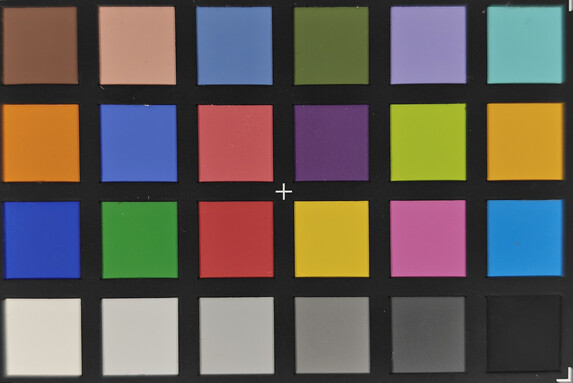

附件和保修:不含电源适配器
交货包括一条 USB-C 连接线、一个 SIM 卡弹出工具和一本安全说明手册。出厂时,显示屏上贴有保护膜。Nothing 在线商店不提供 65 W 电源适配器。
Nothing Phone (3) 在欧盟享有 24 个月的保修服务。
输入设备和操作:无响应手机
得益于清晰的 Nothing OS 3.5、快速的 Snapdragon 8s Gen 4以及反应灵敏的 AMOLED 屏幕的高触摸采样率,Nothing Phone (3) 使用起来非常流畅。线性振动电机与此相得益彰,因为它能提供精确的触觉反馈。
显示屏下方的光学指纹传感器解锁智能手机时没有明显的延迟。智能手机还可以使用 2D 面部解锁功能解锁,该功能也能可靠地工作,但安全性要低得多。
显示屏120 Hz LTPS AMOLED,90 Hz PWM
| |||||||||||||||||||||||||
Brightness Distribution: 98 %
Center on Battery: 1548 cd/m²
Contrast: ∞:1 (Black: 0 cd/m²)
ΔE ColorChecker Calman: 2.2 | ∀{0.5-29.43 Ø4.78}
ΔE Greyscale Calman: 3.7 | ∀{0.09-98 Ø5}
95.5% sRGB (Calman 2D)
Gamma: 2.26
CCT: 6787 K
| Nothing Phone (3) AMOLED, 2800x1260, 6.7" | Google Pixel 9 Pro OLED, 2856x1280, 6.3" | Nothing Phone (2) OLED, 2412x1080, 6.7" | OnePlus 13 AMOLED, 3168x1440, 6.8" | Samsung Galaxy S25+ Dynamic AMOLED 2X, 3120x1440, 6.7" | Xiaomi 15 OLED, 2670x1200, 6.4" | |
|---|---|---|---|---|---|---|
| Screen | 42% | 16% | 22% | 4% | 10% | |
| Brightness middle (cd/m²) | 1548 | 2083 35% | 951 -39% | 1155 -25% | 1371 -11% | 1021 -34% |
| Brightness (cd/m²) | 1535 | 2016 31% | 948 -38% | 1155 -25% | 1370 -11% | 1018 -34% |
| Brightness Distribution (%) | 98 | 84 -14% | 98 0% | 98 0% | 96 -2% | 98 0% |
| Black Level * (cd/m²) | ||||||
| Colorchecker dE 2000 * | 2.2 | 0.7 68% | 1 55% | 1 55% | 2.7 -23% | 1.3 41% |
| Colorchecker dE 2000 max. * | 5.5 | 2 64% | 2.2 60% | 1.8 67% | 4.2 24% | 2.9 47% |
| Greyscale dE 2000 * | 3.7 | 1.1 70% | 1.6 57% | 1.6 57% | 2 46% | 2.2 41% |
| Gamma | 2.26 97% | 2.22 99% | 2.203 100% | 2.3 96% | 2.03 108% | 2.25 98% |
| CCT | 6787 96% | 6560 99% | 6516 100% | 6503 100% | 6450 101% | 6658 98% |
* ... smaller is better
Screen Flickering / PWM (Pulse-Width Modulation)
| Screen flickering / PWM detected | 90 Hz Amplitude: 12.96 % Secondary Frequency: 1086 Hz | ||
The display backlight flickers at 90 Hz (worst case, e.g., utilizing PWM) . The frequency of 90 Hz is very low, so the flickering may cause eyestrain and headaches after extended use. In comparison: 53 % of all tested devices do not use PWM to dim the display. If PWM was detected, an average of 8142 (minimum: 5 - maximum: 343500) Hz was measured. | |||
固定缩放级别和不同亮度设置下的测量系列(最低亮度下的振幅曲线看起来很平,但这是缩放造成的。信息框显示的是最小亮度下的振幅放大图)
Display Response Times
| ↔ Response Time Black to White | ||
|---|---|---|
| 1.17 ms ... rise ↗ and fall ↘ combined | ↗ 0.5895 ms rise | |
| ↘ 0.5825 ms fall | ||
| The screen shows very fast response rates in our tests and should be very well suited for fast-paced gaming. In comparison, all tested devices range from 0.1 (minimum) to 240 (maximum) ms. » 5 % of all devices are better. This means that the measured response time is better than the average of all tested devices (20.2 ms). | ||
| ↔ Response Time 50% Grey to 80% Grey | ||
| 7.86 ms ... rise ↗ and fall ↘ combined | ↗ 0.9615 ms rise | |
| ↘ 6.902 ms fall | ||
| The screen shows very fast response rates in our tests and should be very well suited for fast-paced gaming. In comparison, all tested devices range from 0.165 (minimum) to 636 (maximum) ms. » 19 % of all devices are better. This means that the measured response time is better than the average of all tested devices (31.7 ms). | ||
性能:搭载骁龙 8s 第 4 代处理器的 Nothing Phone (3)
手机 (3) 没有配备 骁龙 8s 第 4 代.4 纳米 SoC 被官方认为是比 骁龙 8 精英版.
因此,Nothing Phone (3) 有足够的动力完成所有日常任务,而且在 12 GB 或 16 GB 内存的支持下,同时打开多个应用程序也不会拖慢速度。
| UL Procyon AI Inference for Android - Overall Score NNAPI | |
| Google Pixel 9 Pro | |
| Samsung Galaxy S25+ | |
| OnePlus 13 | |
| Average of class Smartphone (3769 - 81594, n=138, last 2 years) | |
| Xiaomi 15 | |
| Nothing Phone (3) | |
| Average Qualcomm Snapdragon 8s Gen 4 SM8735 (16446 - 17213, n=2) | |
| Nothing Phone (2) | |
GFXBench (DX / GLBenchmark) 2.7: T-Rex Onscreen | 1920x1080 T-Rex Offscreen
GFXBench 3.0: on screen Manhattan Onscreen OGL | 1920x1080 1080p Manhattan Offscreen
GFXBench 3.1: on screen Manhattan ES 3.1 Onscreen | 1920x1080 Manhattan ES 3.1 Offscreen
GFXBench: on screen Car Chase Onscreen | 1920x1080 Car Chase Offscreen | on screen Aztec Ruins High Tier Onscreen | 2560x1440 Aztec Ruins High Tier Offscreen | on screen Aztec Ruins Normal Tier Onscreen | 1920x1080 Aztec Ruins Normal Tier Offscreen | 3840x2160 4K Aztec Ruins High Tier Offscreen
| 3DMark / Wild Life Extreme Unlimited | |
| Samsung Galaxy S25+ | |
| OnePlus 13 | |
| Xiaomi 15 | |
| Nothing Phone (3) | |
| Google Pixel 9 Pro | |
| Nothing Phone (2) | |
| 3DMark / Wild Life Extreme | |
| Samsung Galaxy S25+ | |
| OnePlus 13 | |
| Xiaomi 15 | |
| Nothing Phone (3) | |
| Nothing Phone (2) | |
| Google Pixel 9 Pro | |
| 3DMark / Wild Life Unlimited Score | |
| Samsung Galaxy S25+ | |
| OnePlus 13 | |
| Xiaomi 15 | |
| Nothing Phone (3) | |
| Google Pixel 9 Pro | |
| 3DMark / Solar Bay Score | |
| Samsung Galaxy S25+ | |
| OnePlus 13 | |
| Xiaomi 15 | |
| Nothing Phone (3) | |
| Google Pixel 9 Pro | |
| 3DMark / Solar Bay Unlimited Score | |
| Samsung Galaxy S25+ | |
| OnePlus 13 | |
| Xiaomi 15 | |
| Nothing Phone (3) | |
| Google Pixel 9 Pro | |
| 3DMark / Steel Nomad Light Unlimited Score | |
| OnePlus 13 | |
| Samsung Galaxy S25+ | |
| Xiaomi 15 | |
| Nothing Phone (3) | |
| Google Pixel 9 Pro | |
| 3DMark / Steel Nomad Light Score | |
| Samsung Galaxy S25+ | |
| OnePlus 13 | |
| Xiaomi 15 | |
| Nothing Phone (3) | |
| Google Pixel 9 Pro | |
| GFXBench (DX / GLBenchmark) 2.7 / T-Rex Onscreen | |
| Google Pixel 9 Pro | |
| Xiaomi 15 | |
| Samsung Galaxy S25+ | |
| Nothing Phone (2) | |
| OnePlus 13 | |
| Nothing Phone (3) | |
| GFXBench (DX / GLBenchmark) 2.7 / T-Rex Offscreen | |
| OnePlus 13 | |
| Xiaomi 15 | |
| Samsung Galaxy S25+ | |
| Nothing Phone (3) | |
| Google Pixel 9 Pro | |
| Nothing Phone (2) | |
| GFXBench 3.0 / Manhattan Onscreen OGL | |
| Xiaomi 15 | |
| Samsung Galaxy S25+ | |
| Google Pixel 9 Pro | |
| Nothing Phone (2) | |
| OnePlus 13 | |
| Nothing Phone (3) | |
| GFXBench 3.0 / 1080p Manhattan Offscreen | |
| OnePlus 13 | |
| Samsung Galaxy S25+ | |
| Xiaomi 15 | |
| Nothing Phone (3) | |
| Google Pixel 9 Pro | |
| Nothing Phone (2) | |
| GFXBench 3.1 / Manhattan ES 3.1 Onscreen | |
| Xiaomi 15 | |
| Samsung Galaxy S25+ | |
| Google Pixel 9 Pro | |
| Nothing Phone (2) | |
| OnePlus 13 | |
| Nothing Phone (3) | |
| GFXBench 3.1 / Manhattan ES 3.1 Offscreen | |
| OnePlus 13 | |
| Xiaomi 15 | |
| Samsung Galaxy S25+ | |
| Nothing Phone (3) | |
| Google Pixel 9 Pro | |
| Nothing Phone (2) | |
| GFXBench / Car Chase Onscreen | |
| Xiaomi 15 | |
| Samsung Galaxy S25+ | |
| OnePlus 13 | |
| Nothing Phone (3) | |
| Nothing Phone (2) | |
| Google Pixel 9 Pro | |
| GFXBench / Car Chase Offscreen | |
| OnePlus 13 | |
| Xiaomi 15 | |
| Samsung Galaxy S25+ | |
| Nothing Phone (3) | |
| Google Pixel 9 Pro | |
| Nothing Phone (2) | |
| GFXBench / Aztec Ruins High Tier Onscreen | |
| Samsung Galaxy S25+ | |
| Xiaomi 15 | |
| OnePlus 13 | |
| Nothing Phone (3) | |
| Nothing Phone (2) | |
| Google Pixel 9 Pro | |
| GFXBench / Aztec Ruins High Tier Offscreen | |
| OnePlus 13 | |
| Samsung Galaxy S25+ | |
| Xiaomi 15 | |
| Nothing Phone (3) | |
| Google Pixel 9 Pro | |
| Nothing Phone (2) | |
| GFXBench / Aztec Ruins Normal Tier Onscreen | |
| Xiaomi 15 | |
| Samsung Galaxy S25+ | |
| Google Pixel 9 Pro | |
| Nothing Phone (2) | |
| OnePlus 13 | |
| Nothing Phone (3) | |
| GFXBench / Aztec Ruins Normal Tier Offscreen | |
| OnePlus 13 | |
| Samsung Galaxy S25+ | |
| Xiaomi 15 | |
| Nothing Phone (3) | |
| Google Pixel 9 Pro | |
| Nothing Phone (2) | |
| GFXBench / 4K Aztec Ruins High Tier Offscreen | |
| Samsung Galaxy S25+ | |
| OnePlus 13 | |
| Xiaomi 15 | |
| Nothing Phone (3) | |
| Nothing Phone (2) | |
| Google Pixel 9 Pro | |
| Jetstream 2 - 2.0 Total Score | |
| Samsung Galaxy S25+ (Chrome 133.0.6943.137) | |
| OnePlus 13 (Chrome 131) | |
| Average Qualcomm Snapdragon 8s Gen 4 SM8735 (233 - 237, n=2) | |
| Nothing Phone (3) (Chrome 138.0.7204.179) | |
| Xiaomi 15 (Chrome 131.0.6778.104) | |
| Nothing Phone (2) (Chrome 114) | |
| Average of class Smartphone (23.8 - 387, n=153, last 2 years) | |
| Google Pixel 9 Pro (Chrome 131.0.6778.81) | |
| Speedometer 2.0 - Result 2.0 | |
| Samsung Galaxy S25+ (Chrome 133.0.6943.137) | |
| OnePlus 13 (Chrome 140) | |
| Nothing Phone (3) (Chrome 138.0.7204.179) | |
| Average Qualcomm Snapdragon 8s Gen 4 SM8735 (339 - 347, n=2) | |
| Xiaomi 15 (Chrome 131.0.6778.104) | |
| Average of class Smartphone (15.2 - 643, n=130, last 2 years) | |
| Google Pixel 9 Pro (Chrome 131.0.6778.81) | |
| Nothing Phone (2) (Chrome 114) | |
| Speedometer 3 - Score 3.0 | |
| OnePlus 13 (Chrome 131) | |
| Samsung Galaxy S25+ (Chrome 133.0.6943.137) | |
| Xiaomi 15 (Chrome 131.0.6778.104) | |
| Nothing Phone (3) (Chrome) | |
| Average Qualcomm Snapdragon 8s Gen 4 SM8735 (19.7 - 21.3, n=2) | |
| Google Pixel 9 Pro (Chrome 131.0.6778.81) | |
| Average of class Smartphone (1.03 - 42.8, n=124, last 2 years) | |
| WebXPRT 4 - Overall | |
| Samsung Galaxy S25+ (Chrome 133.0.6943.137) | |
| OnePlus 13 (Chrome 131) | |
| Xiaomi 15 (Chrome 131.0.6778.104) | |
| Average Qualcomm Snapdragon 8s Gen 4 SM8735 (137 - 184, n=2) | |
| Average of class Smartphone (27 - 306, n=147, last 2 years) | |
| Nothing Phone (2) (Chrome 114) | |
| Nothing Phone (3) (Chrome 138.0.7204.179) | |
| Google Pixel 9 Pro (Chrome 131.0.6778.81) | |
| Octane V2 - Total Score | |
| Samsung Galaxy S25+ (Chrome 133.0.6943.137) | |
| OnePlus 13 (Chrome 131) | |
| Xiaomi 15 (Chrome 131.0.6778.104) | |
| Nothing Phone (3) (Chrome 138.0.7204.179) | |
| Average Qualcomm Snapdragon 8s Gen 4 SM8735 (71781 - 71875, n=2) | |
| Google Pixel 9 Pro (Chrome 131.0.6778.81) | |
| Nothing Phone (2) (Chrome 114) | |
| Average of class Smartphone (2228 - 121337, n=200, last 2 years) | |
| Mozilla Kraken 1.1 - Total | |
| Average of class Smartphone (257 - 28190, n=155, last 2 years) | |
| Nothing Phone (2) (Chrome 114) | |
| Google Pixel 9 Pro (Chrome 131.0.6778.81) | |
| Average Qualcomm Snapdragon 8s Gen 4 SM8735 (521 - 534, n=2) | |
| Nothing Phone (3) (Chrome 138.0.7204.179) | |
| Xiaomi 15 (Chrome 131.0.6778.104) | |
| OnePlus 13 (Chrome 131) | |
| Samsung Galaxy S25+ (Chrome 133.0.6943.137) | |
* ... smaller is better
| Nothing Phone (3) | Google Pixel 9 Pro | Nothing Phone (2) | OnePlus 13 | Samsung Galaxy S25+ | Xiaomi 15 | Average 512 GB UFS 4.0 Flash | Average of class Smartphone | |
|---|---|---|---|---|---|---|---|---|
| AndroBench 3-5 | -63% | -42% | -13% | -16% | -11% | -10% | -40% | |
| Sequential Read 256KB (MB/s) | 3720.79 | 1717.9 -54% | 1949.5 -48% | 3984.23 7% | 4057.35 9% | 3934.92 6% | 3675 ? -1% | 2227 ? -40% |
| Sequential Write 256KB (MB/s) | 3270.73 | 253.53 -92% | 1517.6 -54% | 3684.36 13% | 3311.02 1% | 3889.06 19% | 3072 ? -6% | 1843 ? -44% |
| Random Read 4KB (MB/s) | 438.57 | 218.41 -50% | 287.5 -34% | 301.29 -31% | 294.51 -33% | 296.95 -32% | 382 ? -13% | 295 ? -33% |
| Random Write 4KB (MB/s) | 585.11 | 261.55 -55% | 403.8 -31% | 344.63 -41% | 351.16 -40% | 360.36 -38% | 463 ? -21% | 335 ? -43% |
游戏:保证游戏流畅
配备 Adreno 825-GPU 的 骁龙 8s 第 4 代智能手机能流畅运行当前的游戏。这一点也可以通过Gamebench工具进行的帧数测量也证明了这一点。
在所有图形设置下,智能手机都能达到最高帧率,只有游戏的内部帧率限制会降低帧率。
不过,在《PUBG Mobile》中,最低细节级别也能达到 120 帧/秒。
排放:无热智能手机
表面温度
Nothing Phone (3) 在负载情况下会变得非常热。在 Burnout Benchmark 的压力测试中,我们测得的表面温度高达 52.1 °C。在这样的负载下,你不会想触摸智能手机。
3DMark 压力测试表明,智能手机在负载情况下会迅速降低 SoC 性能,在最糟糕的情况下,SoC 性能会降低到初始性能的 60% 以下。
(-) The maximum temperature on the upper side is 52.1 °C / 126 F, compared to the average of 35.2 °C / 95 F, ranging from 21.9 to 247 °C for the class Smartphone.
(-) The bottom heats up to a maximum of 51.4 °C / 125 F, compared to the average of 34 °C / 93 F
(+) In idle usage, the average temperature for the upper side is 27.9 °C / 82 F, compared to the device average of 32.9 °C / 91 F.
3DMarkSteel Nomad 压力测试
| 3DMark | |
| Wild Life Stress Test Stability | |
| Google Pixel 9 Pro | |
| Xiaomi 15 | |
| Nothing Phone (3) | |
| Nothing Phone (2) | |
| OnePlus 13 | |
| Samsung Galaxy S25+ | |
| Wild Life Extreme Stress Test | |
| Nothing Phone (2) | |
| Google Pixel 9 Pro | |
| Xiaomi 15 | |
| Nothing Phone (3) | |
| Samsung Galaxy S25+ | |
| OnePlus 13 | |
| Solar Bay Stress Test Stability | |
| Nothing Phone (3) | |
| Xiaomi 15 | |
| Samsung Galaxy S25+ | |
| OnePlus 13 | |
| Steel Nomad Light Stress Test Stability | |
| Google Pixel 9 Pro | |
| Xiaomi 15 | |
| Samsung Galaxy S25+ | |
| Nothing Phone (3) | |
| OnePlus 13 | |
扬声器
虽然立体声扬声器很难产生低音,但它们的声音特性却非常均衡,中高音线性分明,因此得分很高。
外置音频设备可通过 USB-C 和蓝牙 6.0 与智能手机连接。
Nothing Phone (3) audio analysis
(+) | speakers can play relatively loud (93.2 dB)
Bass 100 - 315 Hz
(-) | nearly no bass - on average 21.2% lower than median
(+) | bass is linear (4.5% delta to prev. frequency)
Mids 400 - 2000 Hz
(+) | balanced mids - only 4.5% away from median
(+) | mids are linear (3.8% delta to prev. frequency)
Highs 2 - 16 kHz
(+) | balanced highs - only 4.7% away from median
(+) | highs are linear (4% delta to prev. frequency)
Overall 100 - 16.000 Hz
(±) | linearity of overall sound is average (15.9% difference to median)
Compared to same class
» 4% of all tested devices in this class were better, 4% similar, 92% worse
» The best had a delta of 11%, average was 35%, worst was 134%
Compared to all devices tested
» 24% of all tested devices were better, 5% similar, 71% worse
» The best had a delta of 4%, average was 24%, worst was 134%
Samsung Galaxy S25+ audio analysis
(+) | speakers can play relatively loud (90.9 dB)
Bass 100 - 315 Hz
(-) | nearly no bass - on average 18.3% lower than median
(+) | bass is linear (6.5% delta to prev. frequency)
Mids 400 - 2000 Hz
(±) | higher mids - on average 6.3% higher than median
(+) | mids are linear (5.2% delta to prev. frequency)
Highs 2 - 16 kHz
(±) | higher highs - on average 6.7% higher than median
(+) | highs are linear (4.6% delta to prev. frequency)
Overall 100 - 16.000 Hz
(±) | linearity of overall sound is average (16.8% difference to median)
Compared to same class
» 8% of all tested devices in this class were better, 7% similar, 85% worse
» The best had a delta of 11%, average was 35%, worst was 134%
Compared to all devices tested
» 28% of all tested devices were better, 7% similar, 64% worse
» The best had a delta of 4%, average was 24%, worst was 134%
能源:配备硅碳电池的无手机 (3)
耗电量
相当节能的 Nothing Phone (3) 充电速度可达 65 W。
根据 Nothing 的说法,一个充电周期需要 54 分钟,而我们在使用 65 瓦的 Ugreen 2C1A 电源装置时测得的时间为 55 分钟。34 分钟后,电池已充满 80%。
| Off / Standby | |
| Idle | |
Key:
min: | |
| Nothing Phone (3) 5150 mAh | Google Pixel 9 Pro 4700 mAh | Nothing Phone (2) 4700 mAh | OnePlus 13 6000 mAh | Samsung Galaxy S25+ 4900 mAh | Xiaomi 15 5400 mAh | Average Qualcomm Snapdragon 8s Gen 4 SM8735 | Average of class Smartphone | |
|---|---|---|---|---|---|---|---|---|
| Power Consumption | -35% | -66% | -106% | -21% | -26% | -54% | -83% | |
| Idle Minimum * (Watt) | 0.4 | 0.59 -48% | 0.9 -125% | 0.86 -115% | 0.45 -13% | 0.5 -25% | 0.79 ? -98% | 0.849 ? -112% |
| Idle Average * (Watt) | 0.7 | 1.1 -57% | 1.1 -57% | 1.74 -149% | 1.09 -56% | 1.11 -59% | 1.07 ? -53% | 1.43 ? -104% |
| Idle Maximum * (Watt) | 1.21 | 1.2 1% | 1.4 -16% | 1.85 -53% | 1.13 7% | 1.13 7% | 1.345 ? -11% | 1.616 ? -34% |
| Load Average * (Watt) | 7.15 | 5 | 10.69 | 14.41 | 8.91 | 7.62 ? | 7.06 ? | |
| Load Maximum * (Watt) | 20.37 | 10.4 | 11.92 | 16.37 | 9.3 | 8.92 ? | 11.2 ? |
* ... smaller is better
电池寿命
Nothing Phone (3) 的 5,150 mAh 电池是迄今为止 Nothing Phone 最大的电池,在容量方面也明显优于前代产品。
测试机在电池续航时间方面也遥遥领先。在 WLAN 测试中,它的续航时间接近 18.5 小时,远远超过了前代产品。 Nothing Phone (2)和 谷歌 Pixel 9 Pro甩在了后面。
| Battery runtime - WiFi v1.3 | |
| Nothing Phone (3) | |
| Google Pixel 9 Pro | |
| Nothing Phone (2) | |
| OnePlus 13 | |
| Samsung Galaxy S25+ | |
| Xiaomi 15 | |
Notebookcheck 对 Nothing Phone 的总体印象 (3)
Nothing Phone (3) 结合了不同寻常的设计、强大的硬件、出色的摄像头、大容量电池和直到 2032 年的更新。
不过,这款 6.67 英寸的高品质手机并不像 Nothing 所宣传的那样是一款旗舰智能手机。
Nothing Phone (3)
- 08/25/2025 v8
Manuel Masiero
潜在替代品比较
Image | Model / Review | Price | Weight | Drive | Display |
|---|---|---|---|---|---|
| Nothing Phone (3) Qualcomm Snapdragon 8s Gen 4 SM8735 ⎘ Qualcomm Adreno 825 ⎘ 16 GB Memory, 512 GB | Amazon: $719.00 List Price: 899 Euro | 218 g | 512 GB UFS 4.0 Flash | 6.67" 2800x1260 460 PPI AMOLED | |
| Google Pixel 9 Pro Google Tensor G4 ⎘ ARM Mali-G715 MP7 ⎘ 16 GB Memory, 128 GB | Amazon: 1. $749.00 Google Pixel 9 Pro - Unlocke... 2. $749.00 Google Pixel 9 Pro XL - Unlo... 3. $749.00 Google Pixel 9 Pro XL - Unlo... | 199 g | 128 GB UFS 3.1 Flash | 6.30" 2856x1280 495 PPI OLED | |
| Nothing Phone (2) Qualcomm Snapdragon 8+ Gen 1 ⎘ Qualcomm Adreno 730 ⎘ 12 GB Memory, 256 GB | Amazon: 1. $639.00 Nothing Phone (3) Cell Phone... 2. $639.00 Nothing Phone (3) Cell Phone... 3. $649.99 Nothing Phone (2) - 256 GB +... List Price: 699€ | 201.2 g | 256 GB UFS 3.1 Flash | 6.70" 2412x1080 394 PPI OLED | |
| OnePlus 13 Qualcomm Snapdragon 8 Elite ⎘ Qualcomm Adreno 830 ⎘ 16 GB Memory, 512 GB | Amazon: 1. $799.99 OnePlus 13,16GB RAM + 512GB ... 2. $549.99 OnePlus 13R, 12GB RAM + 256G... 3. $11.99 JZG 3 Pack Screen Protector ... List Price: 720€ | 213 g | 512 GB UFS 4.0 Flash | 6.82" 3168x1440 510 PPI AMOLED | |
| Samsung Galaxy S25+ Qualcomm Snapdragon 8 Elite for Galaxy ⎘ Qualcomm Adreno 830 ⎘ 12 GB Memory, 256 GB | Amazon: 1. SAMSUNG Galaxy S25 Ultra, 25... 2. $1,120.00 Samsung Galaxy S25 Ultra ... 3. $11.99 firtstnow 3 Pack Glass Scree... List Price: 1149 Euro | 190 g | 256 GB UFS 4.0 Flash | 6.70" 3120x1440 513 PPI Dynamic AMOLED 2X | |
| Xiaomi 15 Qualcomm Snapdragon 8 Elite ⎘ Qualcomm Adreno 830 ⎘ 12 GB Memory, 512 GB | Amazon: 1. $11.99 Ibywind for Xiaomi 15 Ultra ... 2. $11.99 Ibywind 2 Pack Screen Protec... 3. $7.99 Suttkue for Xiaomi 15 Screen... List Price: 760€ | 191 g | 512 GB UFS 4.0 Flash | 6.36" 2670x1200 460 PPI OLED |
Transparency
The selection of devices to be reviewed is made by our editorial team. The test sample was given to the author by the manufacturer free of charge for the purposes of review. There was no third-party influence on this review, nor did the manufacturer receive a copy of this review before publication. There was no obligation to publish this review. As an independent media company, Notebookcheck is not subjected to the authority of manufacturers, retailers or publishers.
This is how Notebookcheck is testing
Every year, Notebookcheck independently reviews hundreds of laptops and smartphones using standardized procedures to ensure that all results are comparable. We have continuously developed our test methods for around 20 years and set industry standards in the process. In our test labs, high-quality measuring equipment is utilized by experienced technicians and editors. These tests involve a multi-stage validation process. Our complex rating system is based on hundreds of well-founded measurements and benchmarks, which maintains objectivity. Further information on our test methods can be found here.




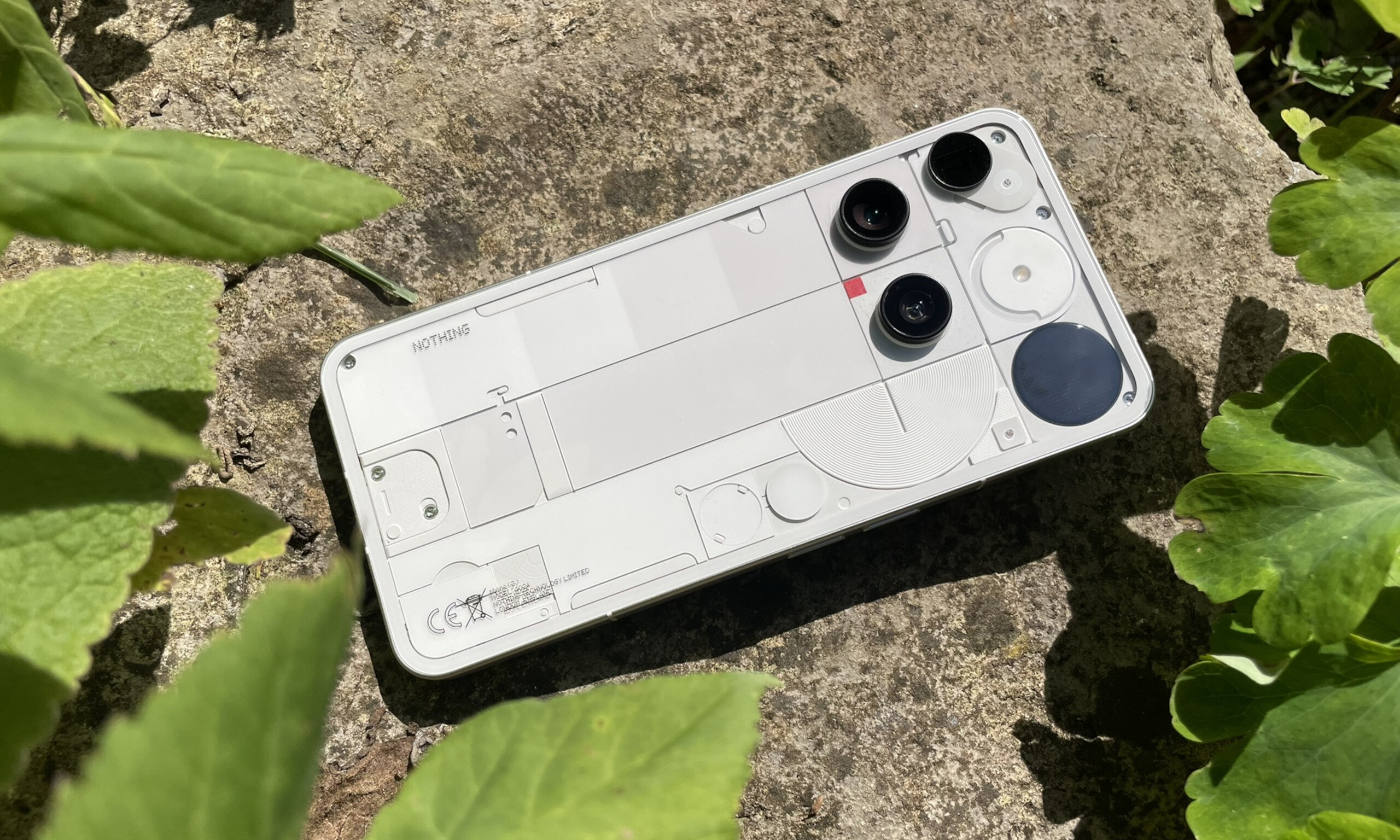

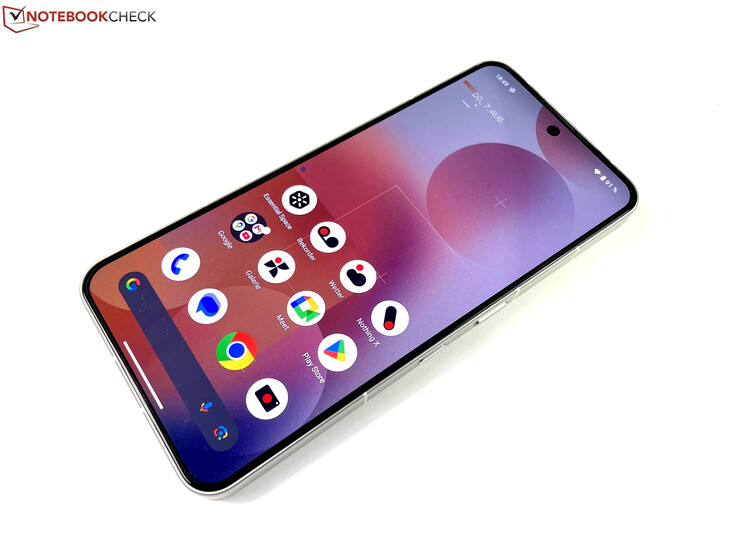

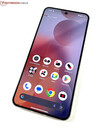



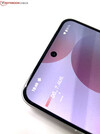
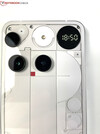

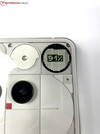
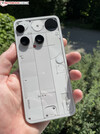
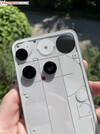

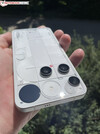





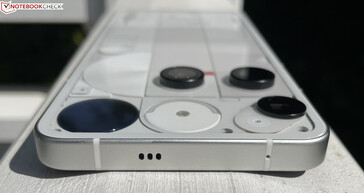


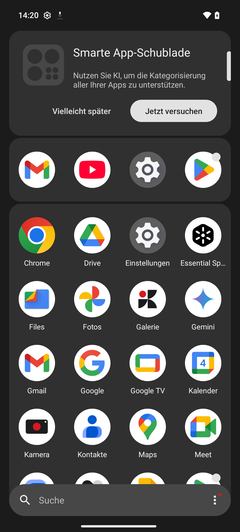

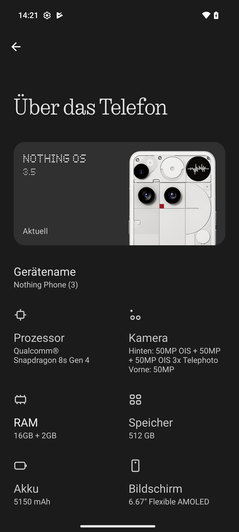

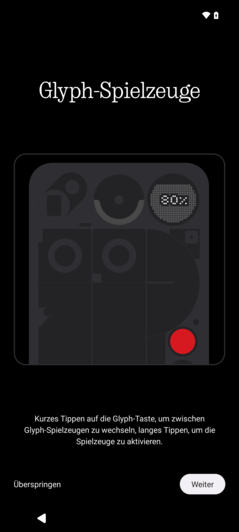
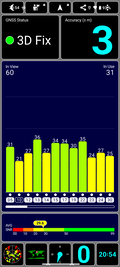
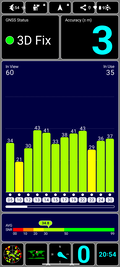
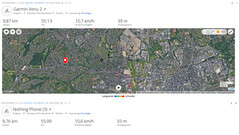






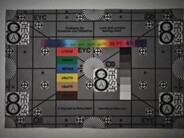
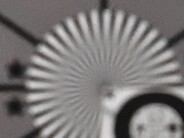
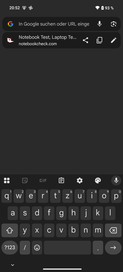
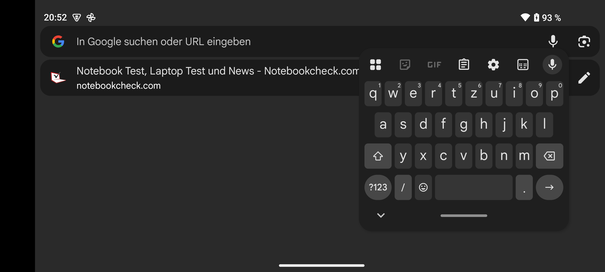

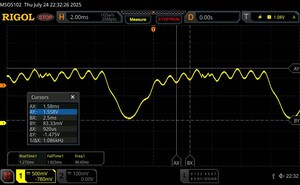





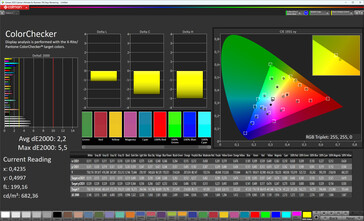
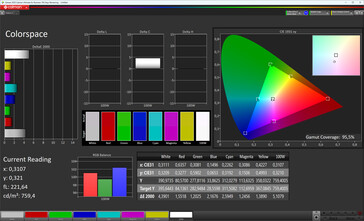
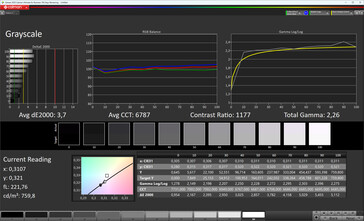
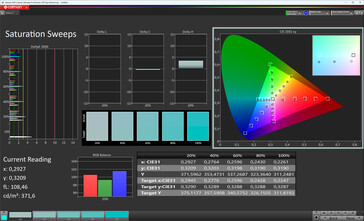

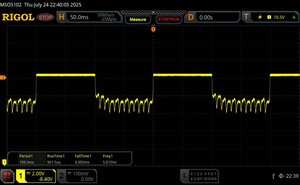
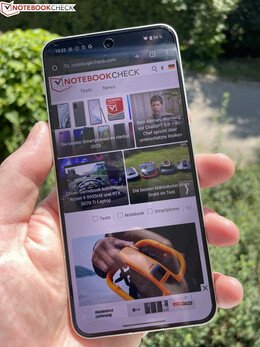
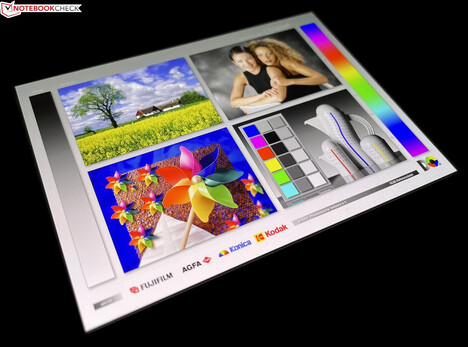

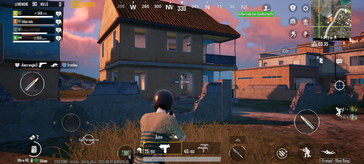

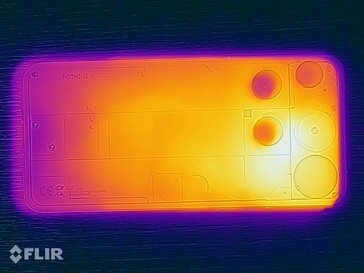
 Total Sustainability Score:
Total Sustainability Score: 




